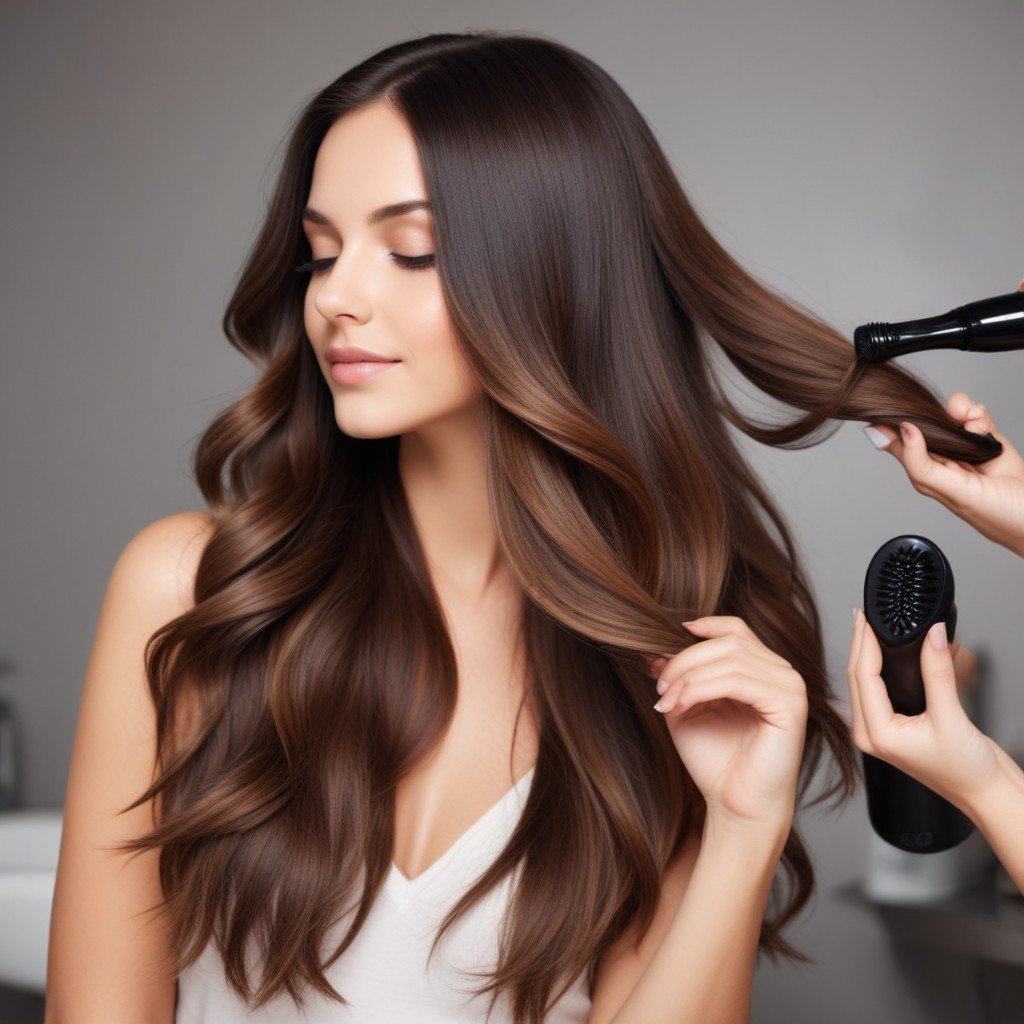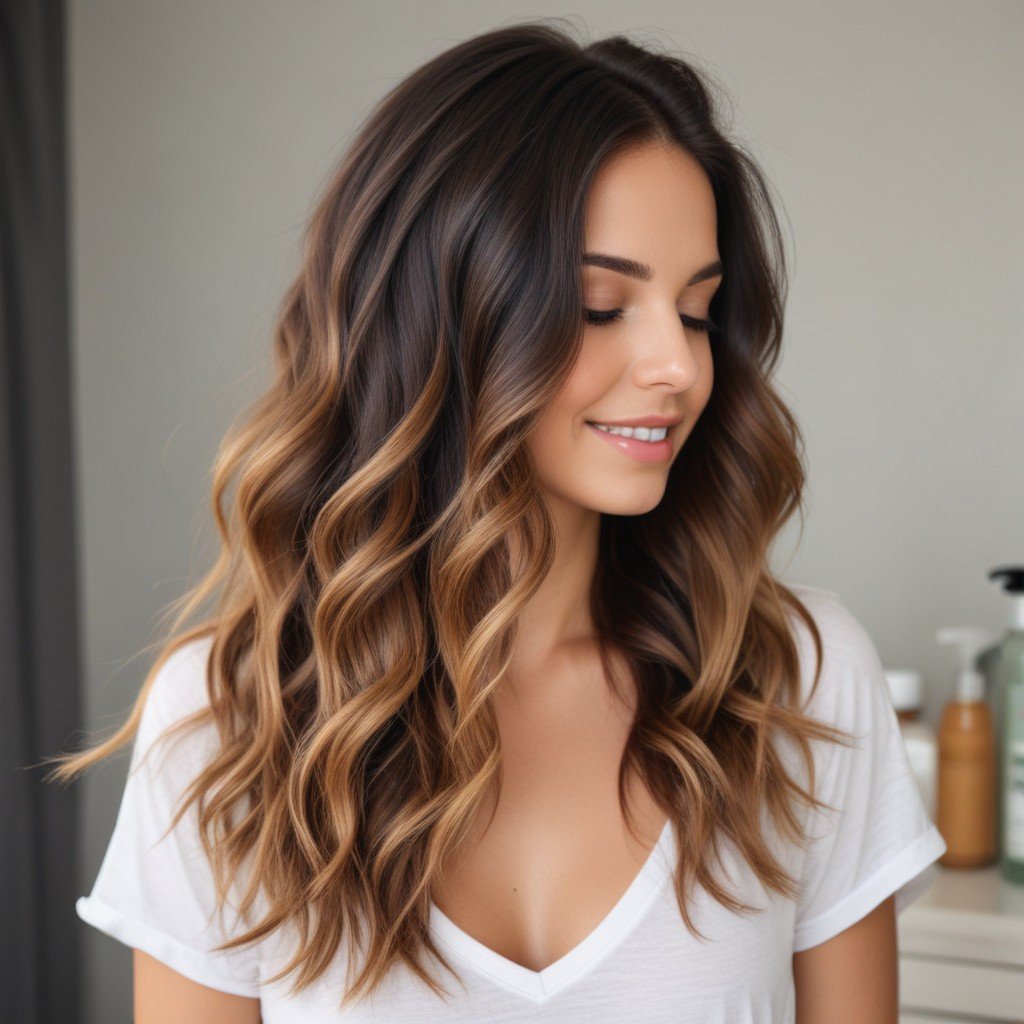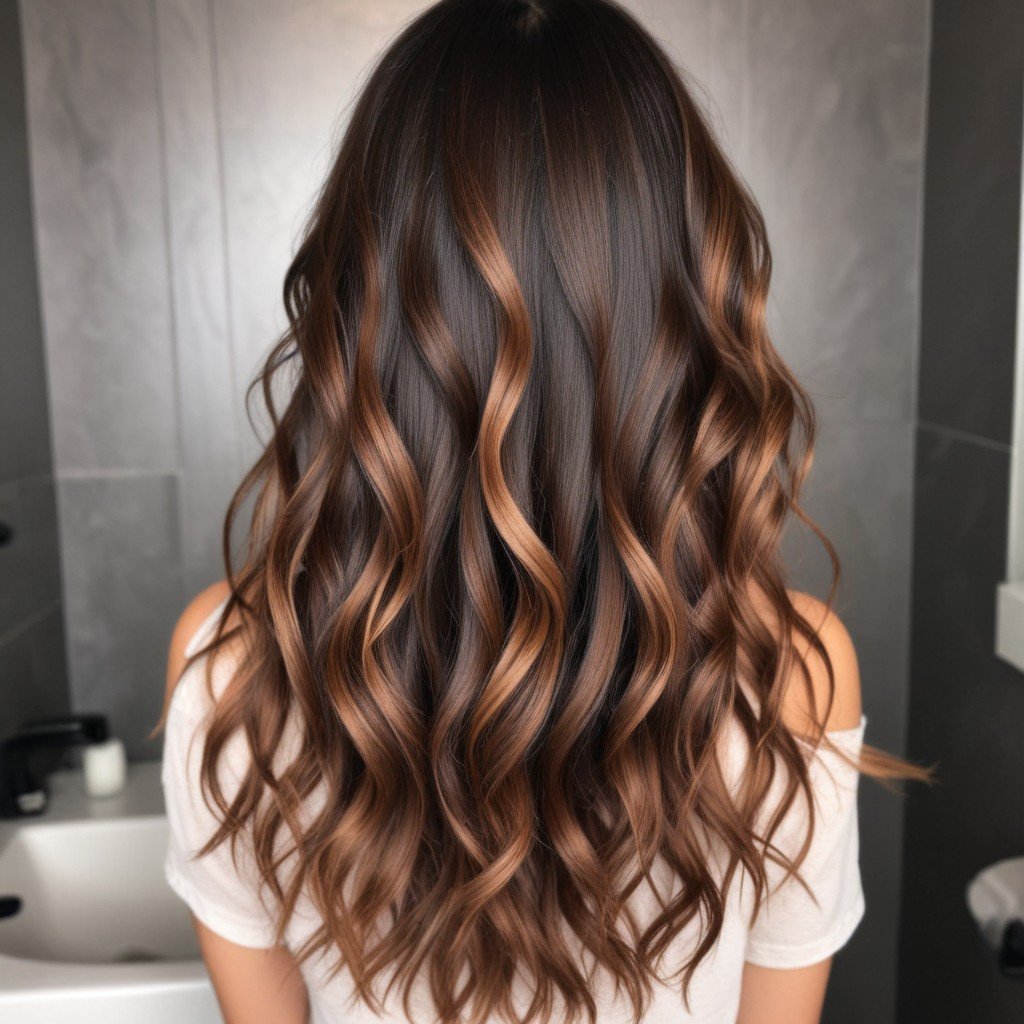Did you know that there are four different types of human hair? Yes, it’s true! Every hair type is unique. Whether your locks are straight as an arrow, wavy like the ocean, curly as a spring, or coiled like a spiral, each type requires its own special care to look and feel its best.
Now, when it comes to taking care of our hair, we’ve got to think about what’s best for us, right? That means considering things like texture, density, porosity, and how thick or thin our hair is. Once we understand these factors, we can figure out the ideal step-by-step hair care routine to keep our mane in top-notch shape.
So, let’s learn the art of hair care with a simple step-by-step hair care routine compiled just for you. We’ll talk about how to take care of your hair every day, starting with the best way to wash it. From choosing the right shampoo to finding the perfect hair wash routine, we’ll cover everything you need to know.
Ready to make your hair look amazing? So, let’s get started!
How to Establish Your Perfect Step-by-Step Hair Care Routine

Starting a step-by-step hair care routine is like beginning a skincare routine. Once you find what works, you’ll stick with it. But with so many options, it can feel overwhelming, especially for people with similar hair types. Let’s break it down and discover how to find the perfect everyday hair care routine just for you.
Factors to Consider for Starting Step-by-Step Hair Care Routine

Your step-by-step hair care routine depends on a few things:
Your Natural Hair Texture
Hair comes in different textures, like straight, wavy, curly, or kinky. Each type needs different care. Oil travels down the hair shaft more quickly in straight hair than in curly hair; thus, straight hair often looks and feels greasy more quickly.
Chemical Processing
If you dyed or bleached your hair, it needs special attention to keep it healthy. It is not recommended for people with colored hair to wash it every day to avoid dryness and early color fading.
Additionally, bleached hair needs extra care in the form of hair masks or conditioners.
If you’re considering going for a bleach-blonde look, take a moment to check out Ellie Pembs’ Instagram account! She openly shares her journey from having damaged blonde hair to healthy, thick brunette locks.If you want to restore your burnt hair, follow her. She provides advice on preventing additional hair damage!
https://www.instagram.com/greasyhairqueen
Styling Preferences
How you like to style your hair affects your step-by-step hair care routine. Whether you straighten, curl, or leave it natural, your habits matter.
Specific Hair Concerns
If you have frizz, dryness, or a flaky scalp, your step-by-step hair care routine should address these issues. Half the battle is figuring out what the problem is. The remainder involves identifying the ideal answer.
The Benefits of a Consistent Step-by-Step Hair Care Routine for Everyday Hair Care
By sticking to a regular step-by-step hair care routine, you can keep your hair healthy and fix some of the problems caused by styling and chemicals. Using hot tools, chemicals, and styling every day can damage your hair.
But with a consistent step-by-step hair care routine, you can tackle these issues. Plus, it helps you reach your hair goals. Whether you want to grow your hair longer, get rid of frizz, or keep your scalp healthy, moisturized and protected, a routine can help you achieve it all. So, by incorporating everyday hair care into your routine, you’re not just maintaining your tresses; you’re also ensuring they stay strong, shiny, and beautiful for the long haul.
Basics of a Step-by-Step Hair Care Routine
In a basic step-by-step hair care routine, there are a few key steps that everyone should follow. These steps include:
Cleansing
Cleansing involves creating a balance between getting rid of debris from products and dead skin cells without depleting the hair of its natural oils.
- To clean your hair, start by washing your hair with a routine hair shampoo that matches your hair type.
- Use warm water, as hot water can dry out your hair and cause color to fade.
- Gently massage the shampoo into your scalp to remove excess oil and product buildup.
Condition
Conditioners offer various benefits, including moisturizing, detangling, adding shine, and reducing frizz. They contain a key ingredient called a cationic surfactant, which sticks to wet hair, coating the strands to replace moisture lost during shampooing.
- Therefore, select a conditioner according to your hair type.
- Fine or thin hair benefits from lighter conditioners, while thicker hair may need something more nourishing.
- Apply conditioner from the mid-shaft downwards and use a wide-tooth comb to distribute it evenly.
Treat
- After showering, gently towel dry your hair with a microfiber cloth to remove excess moisture.
- Then, untangle your hair with a wet brush or comb before applying any post-shower products.
- Consider using hair oils, serums, or leave-in conditioners based on your hair’s needs.
Dry
Decide whether to air dry or use heat to dry your hair.
- Air drying gives your hair a break from heat and reduces the risk of damage.
- If using heat, opt for a hair dryer with quick-drying technology and less extreme heat.
- For curly hair, use a diffuser attachment, while straight hair benefits from a paddle brush or round brush.
Style
- Finish your routine by styling your hair as desired.
- Use lower heat settings on hot tools to prevent damage.
- Styling products can help manage frizz and flyaways, giving you a polished look for any occasion.
Determine The Perfect Hair Wash Routine For Yourself

Determining how often to wash your hair depends on the type and texture of your hair:
Thin, Fine Hair
If your hair is thin and fine, you might need to wash it every other day or even daily, especially if it tends to get greasy quickly. For the best results, follow the consistent and best hair-washing routine with the routine hair shampoo and conditioner suited for your hair type.
Medium, Thick Hair
For medium to thick hair, washing every two to three days is recommended. This type of hair doesn’t become oily as fast, so you can go a few days between washes. However, ensure you’re using products that provide adequate moisture and protection to keep your hair healthy and manageable.
Coarse, Coily Hair
If your hair is coarse or coily, you can get away with washing it once or twice a week. This hair type is often drier and doesn’t get greasy as quickly. Consider incorporating a hair wash routine that includes deep conditioning treatments to nourish and hydrate your strands.
If you’re someone who works out regularly or sweats often, you might need to wash your hair more frequently. Similarly, if your scalp is visibly oily, flaky, or itchy, you may need to wash your hair more often too.
Consider your weekly schedule to determine the best days and times for your hair care routine. You’ll also need to decide whether it’s best to wash your hair in the morning or evening. Experiment with different days and times to find what works best for you and fits into your schedule seamlessly. By finding the right balance and following a step-by-step hair care routine tailored to your needs, you can keep your hair clean and healthy without overwashing.
Don’t Wash Your Hair Every Day
The scalp naturally generates oils that travel along the hair shaft, preserving moisture. However, excessive shampooing can strip away these oils prematurely, resulting in dryness and potential damage to your hair. According to insights from Dr. Michelle Henry of Laser & Skin Surgery Center of New York, “Excessive dryness then leads to significant breakage.”
Jessica O’Brien, artistic educator and stylist at Ouidad in New York City advises to wash your hair when it’s dirty, rather than trying to find a strict routine. “Dirty—with actual dirt or build up,” she emphasizes. “Sweat and oil are not dirt.” Otherwise, just give it a quick water rinse.
Step-by-Step Hair Care Routine For Various Hair Types
Now let’s discuss about crafting your step-by-step hair care routine according to hair types.
Step-by-Step Straight Hair Care Routine
Straight hair falls under Type 1, known for its sleek appearance. Straight and wavy hair can have varying levels of oiliness. Davide Marinelli, owner of Davide Hair Studio, highlights the importance of tailoring your routine. “Find a system that gives your hair texture without weighing it down,” he said. “You may have to test out what works best for you to get the results you want—a leave-in conditioner, a volumizing shampoo, a clarifying shampoo, or any combination of all.”
Cleansing and Conditioning
- Choose products designed to deeply cleanse and target oiliness at the scalp, effectively removing dirt and grease.
- Wash your straight hair every two to three days, adjusting as needed based on your scalp’s oil production.
- Choose sulfate-free shampoos to prevent drying out your hair and scalp while maintaining their natural moisture balance.
- Volumizing conditioners can provide added lift to straight hair, enhancing its natural body and bounce.
- When using dry shampoo, select a product that absorbs scalp oils while adding volume, preventing buildup that can weigh down your hair. Use it sparingly to avoid residue buildup.
After-Wash Care
- After washing your hair, gently towel dry to remove excess moisture, being careful not to rub vigorously.
- Less is more with straight hair, so opt for lightweight or two-in-one products to avoid weighing it down.
- Consider using texturizing sprays that offer hold and volume in one product, simplifying your styling routine.
- Prioritize applying a heat protectant before using any heat styling tools to shield your hair from damage.
Step-by-Step Wavy Hair Care Routine
If your hair falls into the Type 2 category, characterized by wavy locks, you’re in for a hair adventure that balances the line between straight and curly. This routine shares similarities with straight hair care but requires less moisture and lighter products to maintain those beautiful waves without weighing them down.
Cleansing and Conditioning
- Enjoy the flexibility of longer intervals between washes, washing as needed to keep your waves looking fresh.
- Seek out a conditioner that hydrates your hair without weighing it down with heavy oils or ingredients.
- Use conditioner in the shower to detangle your waves gently, smoothing out any knots without causing damage.
- Treat your waves to a deep-conditioning treatment whenever they need an extra boost of moisture and care.
After-Wash Care
- Use a microfiber towel to gently dry your hair, reducing frizz and maintaining your waves’ natural texture.
- Preserve your wavy pattern by refraining from combing or raking through your hair after washing, allowing your waves to air dry undisturbed.
- Apply styling products with a light touch, using the flat palm of your hand to distribute them evenly through the midsection of your hair while avoiding the scalp to prevent greasy buildup.
- Embrace air-drying for a relaxed, effortless look, or use a heat-protecting product if you opt for heat-styling tools.
- Opt for mousse over gel for added definition, as it tends to be lighter and enhances your waves without weighing them down.
Step-by-Step Curly Hair Care Routine
If your hair falls into the Type 3 category, characterized by beautiful curls, moisture becomes your best friend in your hair care journey. With curls prone to dryness, it’s crucial to adopt a routine that hydrates and enhances their natural beauty. Many curly-haired individuals have embraced the curly girl method, a natural approach to maximizing curl definition and health.
Cleansing and Conditioning
- Prioritize moisture when choosing products for your curly hair, avoiding shampoos that can strip away natural oils and worsen dryness.
- If following the curly girl method, go for sulfate-free products to prevent drying out your hair and scalp.
- Consider co-washing, using conditioner only to cleanse your hair and avoid further drying.
- Select a conditioner formulated to replenish moisture in your curls, detangling with a wide-tooth comb while the conditioner sits in your hair.
- Incorporate deep conditioning into your routine weekly to provide intense hydration and nourishment to your curls.
After-Wash Care
- Gently dry your hair with a microfiber towel to minimize frizz, recognizing that curly hair types are more susceptible to frizz.
- Apply a leave-in conditioner to provide an additional layer of moisture as needed, keeping your curls hydrated and defined.
- Style your hair while it’s still wet to enhance curl definition and minimize frizz.
- Choose between a gel or mousse product based on your preference, scrunching it into the ends of your hair to encourage curl formation.
- Opt for air-drying or use a blow dryer with a diffuser attachment on the lowest heat setting to prevent heat damage. Apply a heat protectant before styling with heat tools to shield your curls from potential harm.
Step-by-Step Coily Hair Care Routine
If you have Type 4 hair, commonly known as coily or kinky hair, moisture is your best friend in your hair care journey. Coily hair, often described as Black hair, requires gentle care to maintain its health and beauty.
Cleansing and Conditioning
- Opt for sulfate-free shampoo to avoid drying out your already prone-to-dryness coily hair.
- Choose moisture-adding products rich in humectants to provide your coils with the hydration they crave.
- Limit hair washing to once or twice a week, utilizing conditioner-only washes between regular washes if necessary to prevent over-drying.
- Condition your hair before shampooing to add extra moisture and aid in detangling during the washing process.
- Coiler hair types, such as 4b and 4c, benefit from the regular use of leave-in conditioner to maintain hydration.
- Incorporate a deep conditioning treatment into your routine weekly to nourish and strengthen your coils.
After-Wash Care
- Consider using the LOC/LOG method post-wash. Begin with a leave-in conditioner, followed by hair oils, cream products, or butters, and finish with a styling gel based on your desired hairstyle.
- Minimize heat usage to protect your delicate coils. Whenever possible, allow your hair to air-dry naturally. If you use a blow-dryer, use a diffuser attachment on the lowest heat setting to prevent damage.
- Opt for protective styles like braids, buns, twists, or knots to shield your coils from damage, ensuring they’re not too tight to avoid unnecessary tension.
When it comes to taking care of your hair, no one routine works for everyone. Even though different hair types might have some things in common, it’s essential to figure out which category your hair falls into. Once you know this, you can create a personalized step-by-step hair care routine to give your hair the care it deserves.
FAQs
Understanding your hair texture, density, and any specific concerns like frizz or dryness is key to establishing the perfect hair care routine. Consider factors such as whether your hair is straight, wavy, curly, or coily, as well as any chemical processing or styling preferences you have. By identifying these factors, you can tailor your routine to meet your hair’s unique needs.
Learn about common errors in hair care routines and how to steer clear of them to maintain healthy, beautiful hair.
Discover how changing weather conditions impact hair health and how to adapt your routine accordingly for optimal care.
Explore the role of diet in hair health and find out which nutrients are essential for strong, shiny hair.
Find targeted solutions for common hair issues like dandruff or hair loss and learn how to incorporate them into your routine for the best results.







